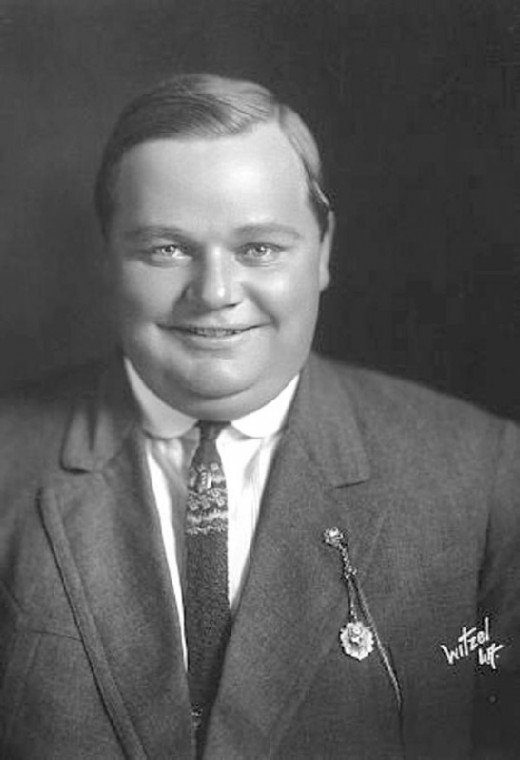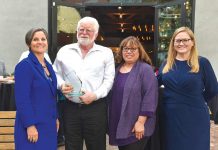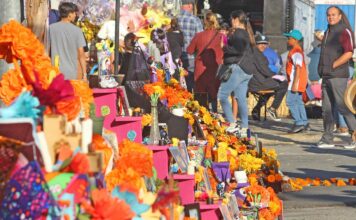I don’t know about you, but I’m truly thankful Michael Jackson’s
media-blitzed trial is at long last over. Now more than 2,200
reporters can get a bit of a breather before the next culture icon
passes through the judicial grinder.
So I suggest while we enjoy this news break, let’s reflect on
America’s very first celebrity trial. That historic happening has a
Santa Clara Valley connection.
I don’t know about you, but I’m truly thankful Michael Jackson’s media-blitzed trial is at long last over. Now more than 2,200 reporters can get a bit of a breather before the next culture icon passes through the judicial grinder.
So I suggest while we enjoy this news break, let’s reflect on America’s very first celebrity trial. That historic happening has a Santa Clara Valley connection.
In America, the first celebrity trial to become a media obsession took place in the 1920s. It centered on a silent film star named Roscoe Arbuckle. The rotund comedian was accused of raping and murdering an aspiring young actress named Virginia Rappe.
Born on March 24, 1887, in Smith Center, Kan., Arbuckle moved with his family to California in 1888. (His step brother Clyde Arbuckle eventually became San Jose’s official historian, locally renown for his exceptional scholarship of the valley’s history.)
Roscoe Arbuckle grew up in San Jose where the hefty fellow gained the nickname “Fatty.” His tenor voice helped him gain a job at a downtown San Jose restaurant as an opera-singing waiter. Serving food, he also developed a flair for kidding around with customers, thus developing his comedic skills.
On Feb. 7, 1903, Sid Grauman got his start as a film mogul when he opened his Unique Theater on San Jose’s East Santa Clara Street. The venue became a popular place to see vaudeville shows as well as the new-fangled “flickers” – as moving pictures were first called.
One day, Grauman discovered the talented Fatty Arbuckle and hired him – at $35 per week and one meal per day – to perform in the Unique Theatre’s Ferris Hartman Musical Comedy and Opera Company. To promote the shows, Grauman had his stout singer sit in the front window of a Greek restaurant and chow down enough food in one sitting to have served a dozen diners.
Through Grauman, Arbuckle became friends with movie producer Mack Sennet who had just started his Keystone Film Company in Hollywood. Seems in that innocent age of the movies, people couldn’t get enough of seeing custard pies thrown back and forth. So in April 1913, Sennet put the former operatic waiter to work as a Keystone Kop making “two-reeler” films filled with frantic slapstick comic action.
Arbuckle’s hilarious mad-cap style proved a hit with the movie-going public. Soon, the San Jose native became as famous a film star as the immensely popular Charlie Chaplin.
Paramount Pictures next hired Arbuckle with an amazing offer that gave the comedian artistic control over his films. His stardom only grew greater. He started making seven-reel feature films. Audiences couldn’t get enough of the fat fellow.
Paramount’s executives knew they had a gold mine, so in 1921, they offered Arbuckle a three-year picture deal at $1 million a year – a fantastic sum back then. But the comedian’s luck would quickly disintegrate when he drove up to San Francisco in his custom Pierce-Arrow automobile for the Labor Day weekend to celebrate his new contract.
What really happened on Sept. 5, 1921, in room 1221 at the St. Francis Hotel remains shrouded in mystery. But the outcome for Arbuckle was that his movie career came to a dramatic dead stop – all because of the death of a 25-year-old Hollywood actress named Virginia Rappe involved in the “Hollywood debauchery” at a private hotel suite party that day.
At Arbuckle’s hotel room party, the guests imbibed mass quantities of alcohol – illegal because of Prohibition. Early that Monday afternoon, Rappe staggered into the bathroom. Arbuckle followed her in and shut the door. Guests saw nothing of the two for about 15 minutes.
Prosecutors said this was when Arbuckle raped the actress. Arbuckle testified he’d found Rappe vomiting into the toilet and suffering from abdominal pain. He said he held her head, cleaned her up and helped her into bed to sleep off what he thought were the effects of the liquor. He then rejoined the party.
Rappe’s condition grew worse. A doctor was called and the actress was taken to Wakefield Sanitorium. She died on Friday. A coroner’s report stated the cause of death was peritonitis brought on by a rupture of the bladder that had been caused by an extreme amount of “external force.”
One of the party’s guest, Maude Delmont, falsely told police she was close friends with Rappe and she’d witnessed Arbuckle dragging the starlet into the room to rape her. Delmont’s lie was so blatant, prosecutors never allowed her to testify on the witness stand.
Media tycoon William Randolph Hearst played the sensational case up with over-dramatic headlines. To sell newspapers, Hearst created a crusade against Arbuckle. He even resorted to doctoring photographs of the comedian by pasting in images of Rappe and a prohibited bottle of whiskey. Arbuckle endured three trials. He was acquitted at all of them. From the evidence, it’s clear he was wrongfully accused. But with the public destruction of his reputation, he never again enjoyed the legions of fans he once had. He died from a heart attack on June 29, 1933, at age 46.
If Michael Jackson can learn one lesson from Arbuckle’s story, it’s this: the media giveth and the media taketh away. We live in a time where the public can’t get enough of the trials and tribulations of the rich and famous. O.J. Simpson, Martha Stewart, actor Robert Blake, Laker star Kobe Bryant. Soon record producer Phil Spector faces judgment on charges of murder. A cable TV show called “Celebrity Justice” even exploits the public mania for this type of star-crossed story.
But long before Jackson and the other luminaries passed through the gauntlet of the judicial court and the media spotlight, there was Roscoe “Fatty” Arbuckle of Santa Clara County.













